Teaching Your Bird Fun Tricks, From simple wave hellos to complex acrobatics. In this article, we will cover everything from getting started to troubleshooting common challenges. Teaching your bird fun tricks isn’t just about entertainment; it’s a gateway to strengthening the bond between you and your avian companion.
Getting Started
Before diving into the world of avian acrobatics, it’s essential to lay the groundwork for successful training sessions.
Choosing the Right Time and Environment for Training
Before Teaching Your Bird Fun Tricks, it’s essential to set the stage for success. Choose a quiet and familiar environment free from distractions for your training sessions. Birds thrive in environments where they feel safe and comfortable, so ensure the training area is conducive to learning. Additionally, select a time when your bird is most alert and receptive to training, typically during the morning or early afternoon.
Understanding Your Bird’s Personality and Learning Style
Just like humans, birds have unique personalities and learning preferences. Some may be outgoing and eager to learn new tricks, while others might be more reserved or cautious. Take the time to observe your bird’s behavior and tailor your training approach accordingly. For example, a shy bird may require gentle encouragement and patience, while a bold bird might respond well to challenges and rewards.
Basic Training Techniques
Mastering the basics lays the foundation for more advanced tricks and behaviors. Let’s explore some fundamental training techniques to get started.
Positive Reinforcement: The Key to Successful Training
Positive reinforcement is the cornerstone of effective bird training. By rewarding desired behaviors with treats, praise, or affection, you’re reinforcing those actions and encouraging your bird to repeat them in the future. Consistency and patience are key as you gradually shape their behavior through positive reinforcement.

Clicker Training: How to Use a Clicker Effectively
Clicker training is a popular method used to mark desired behaviors with a distinct sound, signaling to your bird that a reward is forthcoming. Introduce the clicker gradually, associating the sound with treats or praise to create a positive association. With consistent practice, your bird will learn to associate the click with desired actions, making training more efficient.
Step-Up Training: Teaching Your Bird to Step onto Your Hand
Step-up training is a fundamental skill that forms the basis of many other tricks and behaviors. Start by presenting your hand near your bird and gently encourage it to step onto your hand using verbal cues or a target stick. Reward your bird with treats and praise each time it successfully steps onto your hand. Gradually increase the distance and duration of the step-up behavior as your bird becomes more comfortable and confident.
Target Training: Getting Your Bird to Touch a Specific Target
Target training involves teaching your bird to touch a designated object, such as a stick or a finger, with its beak. Begin by presenting the target object close to your bird’s beak and rewarding it for any interaction with the target. As your bird becomes more proficient, gradually increase the distance and vary the angles of the target. Target training not only enhances your bird’s dexterity but also strengthens your communication and bonding.
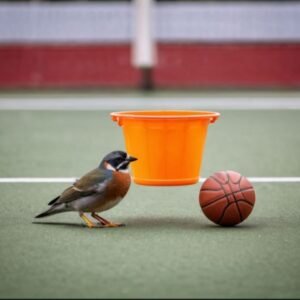
Recall Training: Training Your Bird to Come When Called
Recall training is essential for safety and bonding purposes, allowing you to call your bird back to you on command. Start in a controlled environment, calling your bird by name and rewarding them for flying or walking to you. With consistent practice, they’ll learn to respond to your recall cue reliably.
Teaching Your Bird Fun Tricks
Fun and Easy Tricks
Now that you’ve mastered the basics, it’s time to add some flair to your repertoire with these fun and easy tricks.
Wave: Teaching Your Bird to Wave Hello
Wave hello is a charming trick that showcases your bird’s intelligence and social skills. To teach this trick, hold a treat in front of your bird and gently lift its foot while giving the verbal cue “wave” or “hello.” Reward your bird for any attempt to lift its foot, gradually shaping the behavior into a distinct waving motion. With patience and practice, your bird will learn to greet you and others with a delightful wave.
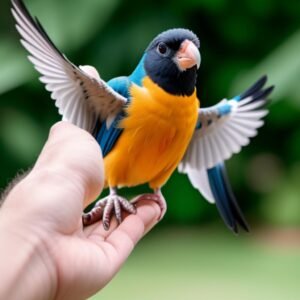
Turn Around: Getting Your Bird to Spin in a Circle
Spin into excitement with this playful trick. Hold a treat in front of your bird and guide them in a circle motion with your hand or a target stick. Reward them for each rotation until they can spin in a full circle on command.
Fetch: Training Your Bird to Retrieve Objects
Fetch is a challenging yet rewarding trick that taps into your bird’s natural foraging instincts. Begin by teaching your bird to pick up small objects, such as wooden beads or toy balls, using positive reinforcement techniques. Once your bird is comfortable with picking up objects, gradually introduce the concept of fetching by tossing the object a short distance and encouraging your bird to retrieve it. With consistent practice, your bird will delight in fetching items for you and engaging in interactive play.
High Five: Teaching Your Bird to Give You a High Five
Reach new heights of camaraderie with a feathered high five. Present your hand to your bird and encourage them to touch it with their foot or beak. Reward any interaction, gradually shaping the behavior until they can give you a high five on cue.

Spin the Wheel: Getting Your Bird to Spin a Small Wheel
Spin into excitement with this delightful trick. Spin the wheel is a delightful trick that combines physical activity with mental stimulation. Introduce your bird to a small wheel or disc mounted on a perch and encourage it to interact with the object using treats or verbal cues. With practice, your bird will master this entertaining trick and enjoy showing off its spinning skills.
Intermediate Tricks
Ready to level up? These intermediate tricks will challenge your bird’s skills and keep them engaged.
Ring Toss: Teaching Your Bird to Toss a Ring onto a Peg
Take aim and toss boredom aside with this entertaining trick. Present your bird with a small ring and a peg or perch, encouraging them to toss the ring onto the target. Reward any attempts, gradually increasing the distance and difficulty until they can complete the task reliably.
Play Dead: Training Your Bird to Lie Down on Command
Add a touch of drama to your repertoire with this captivating trick. Play dead is a fun and engaging trick that showcases your bird’s ability to mimic behaviors. Begin by teaching your bird to lie down on a flat surface using positive reinforcement techniques. Use a verbal cue like “play dead” or “sleep” and reward your bird for lying still. With patience and consistency, your bird will learn to play dead on command, delighting audiences with its dramatic performance.
Shake Hands: Teaching Your Bird to Shake Hands with You
Extend a friendly greeting with this charming trick. Present your hand to your bird and encourage them to touch it with their foot or beak. Reward any interaction, gradually shaping the behavior until they can shake hands on command.
Peek-a-boo: Getting Your Bird to Play Peek-a-boo with You
Peek-a-boo, I see you! Encourage your bird to play peek-a-boo by hiding behind your hands or a cloth and reappearing with a cheerful greeting. Reward them for any participation, gradually shaping the behavior until they can play peek-a-boo on cue.
Hoop Jump: Training Your Bird to Jump through a Small Hoop
Leap into excitement with this thrilling trick. Introduce a small hoop or ring and encourage your bird to jump through it with the promise of a tasty treat on the other side. Gradually increase the height and distance until they can jump through the hoop on command.
Advanced Tricks
Ready for a challenge? These advanced tricks will showcase your bird’s intelligence and agility.
Puzzle Solving: Training Your Bird to Solve Simple Puzzles
Exercise your bird’s mind with stimulating puzzles designed to challenge their problem-solving skills. Introduce puzzles that require manipulation or foraging to access a hidden treat, rewarding them for each successful solution.

Mimicry: Teaching Your Bird to Mimic Sounds or Words
Unlock your bird’s vocal talents with mimicry training. Repeat simple sounds or words in front of your bird, rewarding them for any attempts to mimic the sound. With patience and practice, they’ll learn to replicate a variety of vocalizations on command.
Acrobatics: Training Your Bird to Perform Aerial Maneuvers
Take flight with acrobatic training designed to showcase your bird’s agility and grace. Introduce hoops, swings, or balance beams for your bird to navigate, rewarding them for each successful maneuver.
Basketball: Getting Your Bird to Dunk a Mini Basketball
Score big with this sporty trick. Introduce a mini basketball and hoop, encouraging your bird to dunk the ball with their beak or feet. Reward any attempts, gradually increasing the difficulty until they can make a slam dunk on command.
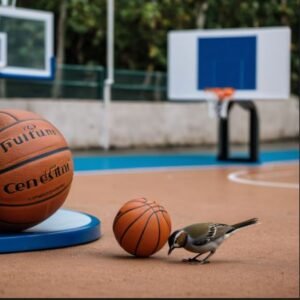
Bowling: Teaching Your Bird to Knock Over Mini Bowling Pins
Strike up some fun with this entertaining trick. Set up a mini-bowling alley with pins and encourage your bird to knock them over with a small ball or object. Gradually shaping the behavior until they can bowl a strike on command.
Troubleshooting Training Challenges
Even the most skilled trainers encounter challenges along the way. Here’s how to navigate common training obstacles with ease.
Dealing with Common Training Challenges
From stubborn behavior to distractions, training challenges are par for the course. Stay patient and adaptable, adjusting your approach as needed to address specific issues and obstacles.
Overcoming Fear or Resistance to Training
Fear or resistance to training can stem from past experiences or unfamiliar stimuli. Create a safe and supportive environment, gradually introducing training activities at your bird’s pace to build confidence and trust.
Handling Setbacks and Frustrations
Setbacks are a natural part of the learning process. Stay positive and resilient, focusing on progress rather than perfection. Celebrate small victories along the way, and remember that patience and persistence are the keys to success.
Enrichment Activities
Beyond training sessions, enrichment activities provide ongoing mental stimulation and engagement for your bird.
DIY Toys and Games for Mental Stimulation
Get creative with homemade toys and games designed to challenge your bird’s mind and dexterity. From foraging puzzles to interactive toys, there’s no shortage of DIY options to keep your feathered friend entertained.
Setting Up an Enriching Environment for Your Bird
Create a stimulating environment that caters to your bird’s natural instincts and behaviors. Incorporate perches, swings, and climbing structures to encourage physical activity, and rotate toys regularly to keep them engaged and curious.
Bonding Through Training
Training isn’t just about teaching tricks; it’s about forging a deeper connection with your bird based on trust, communication, and mutual respect.
Strengthening the Bond Between You and Your Bird
Training sessions provide valuable one-on-one time that strengthens the bond between you and your bird. Through shared experiences and positive interactions, you’ll deepen your relationship and foster a sense of companionship.
Building Trust and Communication Through Training Sessions
Trust and communication are the foundation of any successful relationship, avian or otherwise. By establishing clear cues, reinforcing positive behaviors, and respecting your bird’s boundaries, you’ll build trust and enhance communication during training sessions.
Conclusion
Teaching your bird fun tricks isn’t just about entertainment; it’s a journey of discovery, bonding, and mutual enrichment. By embracing positive reinforcement, patience, and creativity, you’ll unlock your bird’s full potential and create cherished memories together. So, grab some treats, cue up your clicker, and embark on a rewarding adventure with your feathered friend!
FAQs: Teaching Your Bird Fun Tricks
How long does it take to train a bird?
Training a bird can vary in duration depending on factors such as the bird’s species, personality, and the complexity of the tricks being taught. While some basic tricks may be learned relatively quickly with consistent training sessions, more advanced behaviors may require weeks or even months of practice. Patience, consistency, and positive reinforcement are key elements in the training process.
Can any bird learn tricks, or are some species better suited than others?
While all birds have the capacity to learn, certain species may be more inclined towards learning tricks than others. Generally, birds with higher levels of intelligence, such as parrots and corvids, tend to excel in trick training. However, with patience and the right approach, birds of various species, including budgies, cockatiels, and even canaries, can learn and enjoy performing tricks.
What treats are best for training birds?
The best treats for training birds are small, bite-sized, and highly desirable to your feathered friend. Treats such as nuts, seeds, fruit, or commercial bird treats can be used as rewards during training sessions. It’s essential to choose treats that your bird finds particularly enticing and reserve them exclusively for training purposes to maintain their motivation and focus.
How often should I train my bird?
The frequency of training sessions can vary depending on your bird’s individual needs, schedule, and attention span. It’s generally recommended to keep training sessions short and engaging, ranging from 5 to 15 minutes per session, several times a week. Regular, consistent training sessions are essential for reinforcing learned behaviors and building upon new skills gradually.
How to teach your bird to play dead?
To teach your bird to play dead, lure them onto a flat surface with a treat, gently guide them into a lying position, and reward them for lying still. Repeat this process, gradually shaping the behavior until your bird can play dead on command.
How to train a bird to come when called?
To train a bird to come when called, start by using positive reinforcement, such as treats or praise, whenever they respond to their name. Gradually increase the distance between you and the bird, rewarding them each time they come closer until they reliably come when called. Consistent practice and patience are key to success.
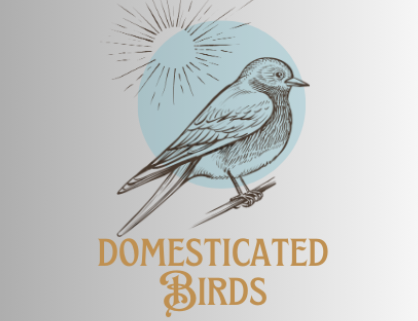
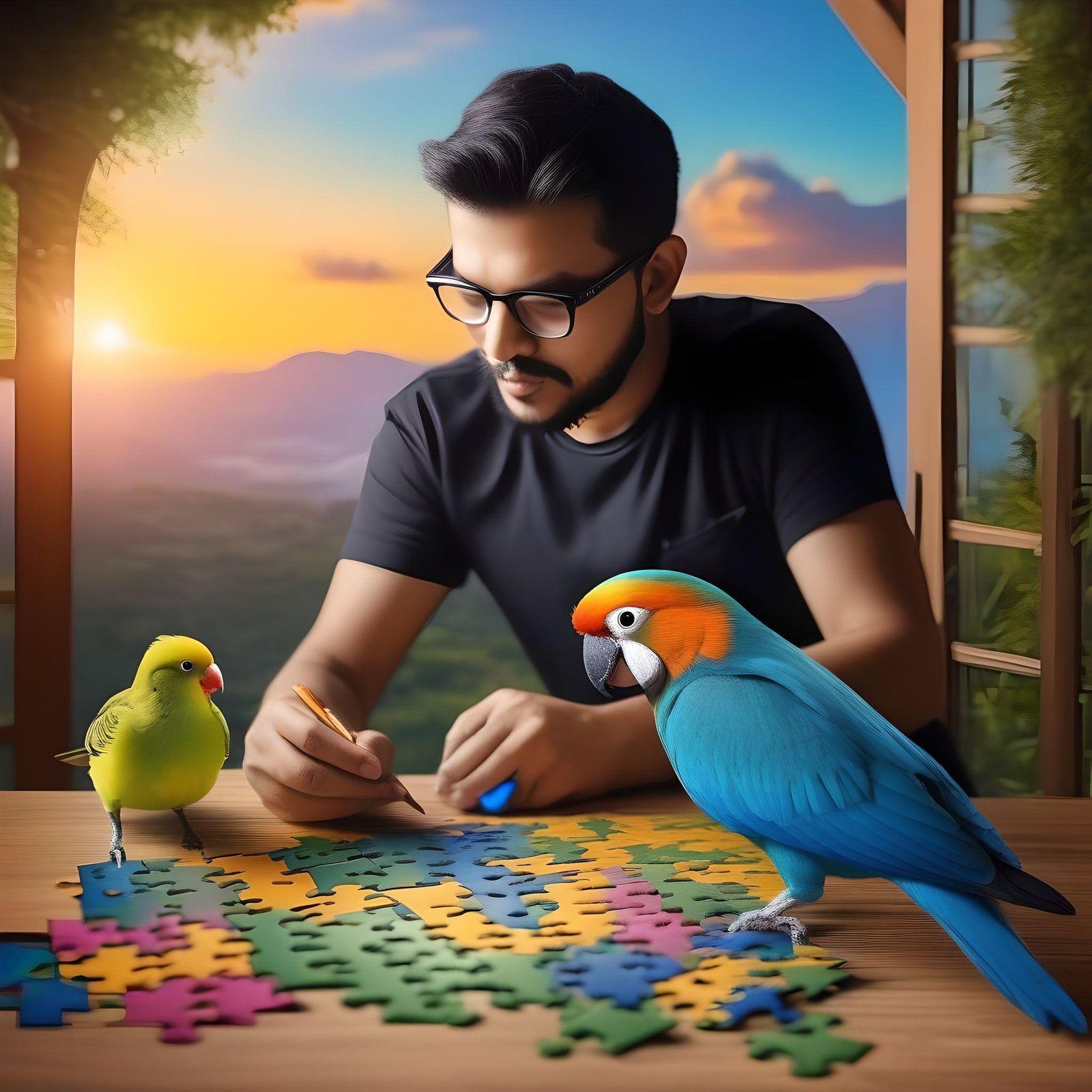
2 thoughts on “From Basics to Mastery: Teaching Your Bird Fun Tricks”